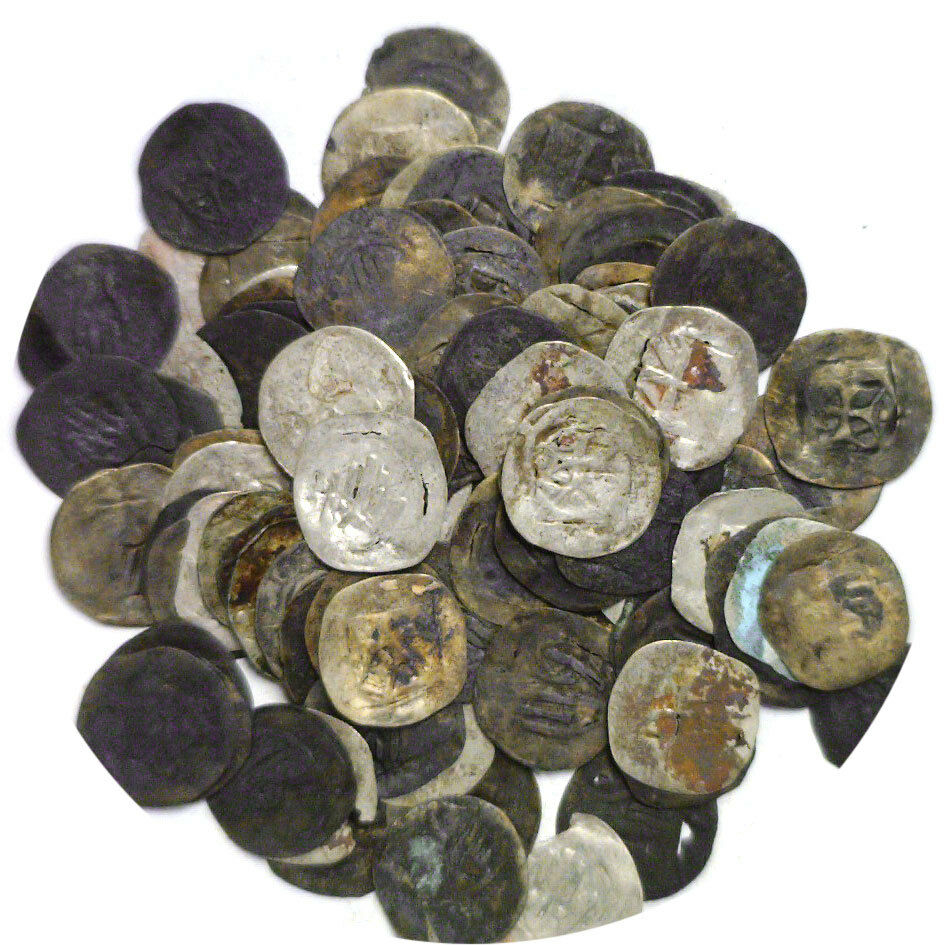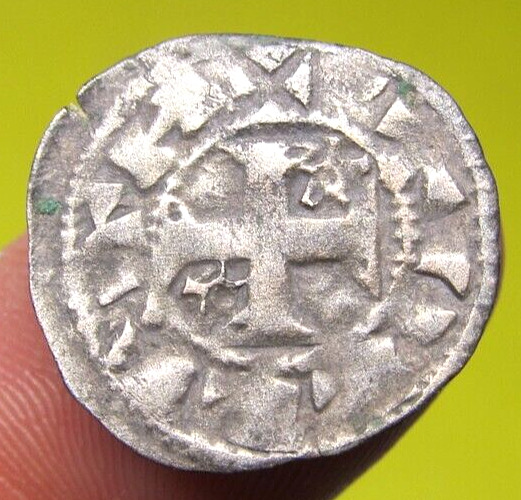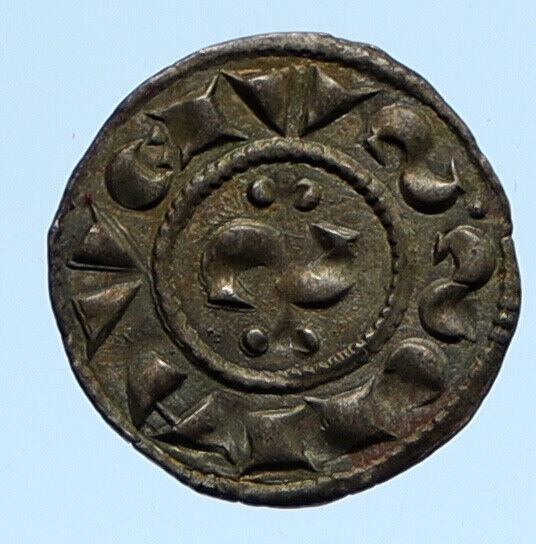-40%
Medieval Europe:The Middle Ages A Collection of 12 Silver Coins In Wood Box
$ 286.19
- Description
- Size Guide
Description
Medieval Europe:The Middle Ages A Collection of 12 SilverCoins In Beautiful Wood Presentation Box.
The Middle Ages, as the name suggests, represent a long period of transition—the nine centuries between the fall of Rome and the start of the Renaissance. The medieval period is often depicted as backwards, an era marred by holy war, plague, and ignorance—the Dark Ages, when barbarians pillaged cities, destroyed ancient art, burned libraries, and set human progress back a thousand years. But the Middle Ages were anything but dark. There were many accomplishments in the medieval period, especially in the fields of architecture, poetry, agriculture, and economics. One of these was the re‐emergence of silver coins as money—a near‐universal currency that was recognized across Europe, from London to Constantinople. As trade exploded in the 11th century, emerging states stepped up their production of silver coins. It might be said that the road to our modern global economy was paved with silver. This unique collection includes 12 silver coins struck in Europe during the Middle Ages. Because no two coins are alike, owing to the crude medieval minting methods, this collection is one of a kind. Each coin is protected in an archival capsule and beautifully displayed in a deluxe custom‐made cherry hardwood case. The case features a rich, forest green velour‐like interior and an engraved plaque inscribed with a list of the coins. The deluxe case and a certificate of authenticity come packaged in an attractive black embossed gift box.
France, Toulouse: denier (1148‐1249) This city in the South of France was extremely influential at the time. Count Raymond IV of Toulouse was one of the leaders of the First Crusade. The Crusader influence is obvious in the cross pattée design on the coinage. W: XXX; D: XXX. Almohad Caliphate, Spain: dirham (1170‐1269) The Almohads held the south of Spain for most of the Crusader period. There is no portrait on the square‐shaped coin, in deference to the Islamic prohibition on graven images, but ornate Arabic script. W: XXX; D: 13.5‐14.2 mm German States, Schwäbisch Hall: heller (ca. 1189‐1450) The denomination of this coin is the heller, a name deriving from the original name haller, a reference to the Medieval Swabian city of Hall, where this coin type was first struck. On the obverse is the Hand of God. W: 0.3‐0.6 g; D: 16‐18 mm Austria, Vienna: pfennig (ca. 1230‐1395) The Eastern March was the name for the territory on the Danube, on Bavaria’s eastern frontier—“Austria” is a variation of Middle German for “East.” Struck in Vienna, the pfennig features crude designs on both obverse and reverse, typical of provincial. W: 0.6‐0.8 g; D: 14‐16 mm Venice: tornesello (ca. 1245‐1423) A city of canals and waterways, Venice was the richest medieval city in Christendom, a formidable maritime power, and the hub of banking and trade. This coin features the winged lion of St. Mark, seated facing, holding a book. W: 15‐17 mm; D: 0.5‐0.7 g Frankish Greece: denier tournois (ca. 1250‐1388) The Frankokratia is the name for the whole of the small Frankish principalities that spouted up in Central Asia and the Middle East after the fall of Constantinople in 1204. These were conquered by knights from the West, mainly sons of the nobility who were not firstborn. “Franks” is what all Western Crusaders were called, regardless of origin. W: 18.5‐19 mm; D: 0.6‐1.0 g Edward I & II, England: “long cross” penny (1272‐1307) The coin design changed little during the reign of the medieval Plantagenets. The obverse portrait of Edward is similar to that of his father, Henry III; his son and successor Edward II did not change the portrait at all, perhaps in an attempt to trade on the success of the first Edward’s reign. The reverse is the “long cross” for which the coins are named. W: 17‐19.5mm; D: 1‐1.3 g Bohemia, Prague: groshen (ca. 1278‐1516) By the reign of Charles IV in the fourteenth century, Prague was the third largest city in medieval Europe; only Rome and Constantinople were more populated. This oversized coin features the Bohemian lion in circle. W: 28.5‐29.5 mm; D: 3‐3.8g Bavaria, Salzburg: pfenning (ca. 1314‐1503) Salzburg means “Salt Castle,” a reference to the salt barges on the Salzach River that had to pay a toll in the city. It was the seat of the Archbishopric of Salzburg, a prince‐bishopric of the Holy Roman Empire. W: XXX; D: XXX. Louis I, Hungary: denar (1342‐82) Louis the Great was arguably the most accomplished monarch of the Late Middle Ages and the first European king to fight the Ottoman Turks, which is perhaps why this coin features the head of a Saracen—the European term for “Muslim”—on the obverse. The reverse is a double‐barred cross popular in Crusader times. W: 0.3‐0.6g; D: 13‐14.5mm. Ivan Alexander, Bulgaria: grosch (1331‐71) This tsar ruled for 40 years during the Second Bulgarian Empire. His long reign comprises a high point of Bulgarian culture, when the economy flourished. The obverse shows Christ enthroned; the reverse is a portrait of the king. W: XXX; D: XXX. Sigismund of Luxemburg, Hungary: parvus (1387‐1437) The 50‐year reign of the last monarch of the House of Luxembourg was the longest in Hungarian history. The obverse of the coin depicts a four part shield with Arpadian stripes and eagle. W: 0.2‐0.3g; D: 8.5‐9mm. Each coin is protected in an archival capsule and beautifully displayed in a deluxe case. Each collection comes with a certificate of authenticity, and a plaque inscribed with a list of the coins. The box set is packaged in an attractive black gift box. Box measures approximately: 13 25/32" x 6 11/16" x 1 3/8"Coin type and grade may vary somewhat from image
Over 23,000 Positive Feedbacks











